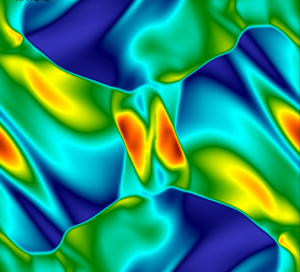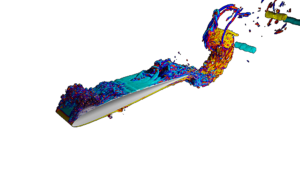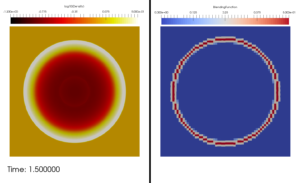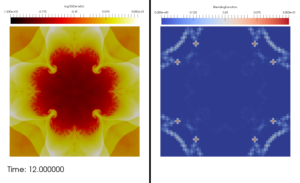A robust and easy way of simulating a hyperbolic test case with discontinuities is to use a 1st order finite volume scheme. Using such a method for magnetohydrodynamics (MHD) problems like the Orszag-Tang vortex leads to following results:
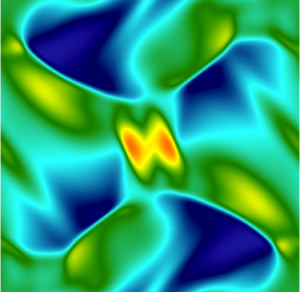
For this and the following examples we used a 4th order time integration scheme and 256 degrees of freedom in each spatial direction.
A way to generate more accurate results is to increase the order of the scheme, which has to be treated with caution near discontinuities because oscillations may occur. To overcome this issue one could use higher order schemes in smooth regions and lower order schemes in regions with discontinuities. An example for such an approach is our so called DGFV scheme, which blends e.g. a 4th order Discontinuous Galerkin scheme with a 1st order Finite Volume scheme.
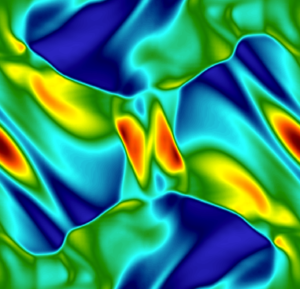
Another way of doing it, is to use a suitable 4th order finite-volume scheme for MHD with a fitting limiter.
